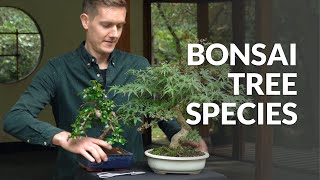Cryptomeria Bonsai Care guidelines
Cryptomerias like a sunny place as long as the temperatures don't rise too much. They prefer high humidity and suffer from dry heat. During hot summer weeks it is best to keep them in semi-shade. Japanese cedars tolerate little frost, especially when they are planted in shallow bonsai containers, and should be protected during winter. A cold but frost-free greenhouse is an ideal winter place.
The Cryptomeria needs a lot of water during the growing season and its rootball must not dry out. Try to provide increased humidity by watering over the foliage, bench and ground below. It prefers slightly acidic or neutral water with a pH value between 5,5 and 7. Better use rain water if your tap water is very calcareous. Continue reading about watering Bonsai trees.
Watering
Free lecture from the Beginners CourseFertilize the tree once a month with solid organic fertilizer or use a liquid fertilizer every week during the growing season.
Pinch back new growth continually during the growing season when the new shoots have grown one or two centimeters long. This helps to develop and maintain compact foliage pads. Remove shoots at the undersides and bases of the branches and remove excess old foliage to let light and air reach the inside of the foliage pads. Early spring is a good time for substantial pruning. Cut wounds turn brown but are soon hidden by new growth. Cryptomeria backbuds willingly. Continue reading about pruning Bonsai trees.
Young branches are easy to wire, but be careful not to crush the foliage. Use aluminum wire which is softer than copper and easier to remove without damaging the twigs and foliage. Older branches are quite stiff and brittle and should be positioned in little steps and with great care. Guy wires are a good option to shape the branches.
Repot younger trees every two to three years, older specimen less often, using a well-draining standard soil mixture with a pH value between 5,5 and 7. The roots of the Japanese cedar bonsai grow only moderately, so don't prune them too heavily. Continue reading about repotting Bonsai trees.
Cryptomeria bonsai can be propagated from seed in spring or from cuttings in summer. Air-layering is also possible.
Cryptomeria trees are hardly attacked by pests and diseases. Spider mites, scale or mildew can sometimes occur, then use a specific pesticide. For more detailed information on these techniques, check out our Bonsai tree care section.

Japanese Cedar bonsai (Cryptomeria japonica)
General information about the Japanese Cedar Bonsai tree
The popular English name, Japanese cedar, is misleading as the tree does not belong to the Cedrus genus. Cryptomeria japonica is the only species of the Cryptomeria genus and native to cool and moist regions of Japan and China. In winter the foliage can change its colour to olive, brown or purple, especially when it is exposed to full sun while the temperatures drop. The Japanese cedar is not very frost-hardy, though. In spring the normal green needle colour returns. There is a Japanese and a Chinese variety, the latter with longer needles, and around 50 cultivars. The Japanese variety is also very suitable for small shohin bonsai. Japanese cedars are quite popular bonsai and, inspired by their natural habit, they are in most cases styled in formal upright shapes, also occasionally as twin trunks, groups and rock plantings. If you need help identifying your tree, take a look at our Bonsai tree identification guide.





